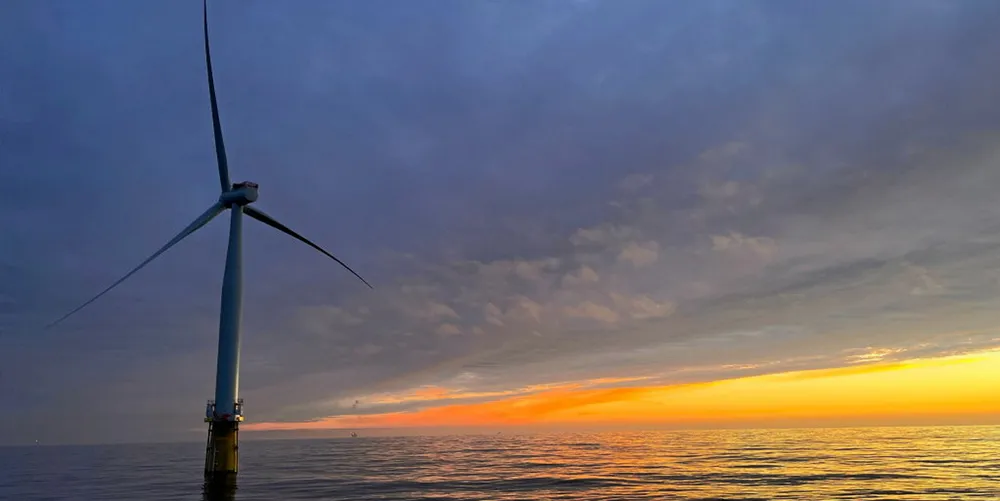Does 'fragmented' floating wind risk relegation to the energy transition periphery?
Sector must contend with obstacles not faced by fixed-bottom, says analyst, but developer flags pluses too

Floating wind risks playing a peripheral role in the European energy transition due to the fragmented nature of the demand on offer to potential developers so far, warned the CEO of offshore wind specialist Aegir Insights.
Scott Urquhart, who at an earlier stage in his career played a part in Orsted’s transformation into the world’s offshore wind pioneer, says floating wind has the opportunity to build on fixed-bottom's success, but still lacks some of the fundamentals to do so.
Urquhart described how early fixed-bottom developers were able to work out their plans for vessels and fabrication in a systematic way, offering suppliers a consistent pipeline for building up an industrialised offshore wind sector.
“This pipeline allowed developers to claim massive wins on a year-by-year basis, in terms of cost reduction,” he recalled.
He contrasts this to floating wind that so far offers “stepping stones” in a range of different locations.
“Unfortunately, one of the challenges for floating wind is that it is facing such a fragmented build up in different places like the UK, Norway, France, Spain, Portugal, Italy and Greece,” Urquhart said, with other markets such as Japan and California at an even earlier stage of development.
'Peripheral role'
Part of the problem, in Urquhart’s view, is that a floating wind sector struggling with higher costs, an immature supply chain and lagging infrastructure requirements can be relegated to a peripheral role in the view of policymakers.
This diagnosis applies even in markets such as the UK, where the ScotWind leases offer demand on a gigawatt scale for floating wind.
Many in the industry see supply chain issues and port infrastructure as the biggest challenge to faster development in the UK, and Urquhart agrees with this.
He also highlights the UK’s current rules on transmission network use as a factor holding back investment, as it can can add as much as 20% to the rates paid by Scottish wind projects, far north of their main markets.
“Grid reform is needed in the UK if ScotWind is to realise its potential to be the launch pad for floating wind,” Urquhart said.
At the other end of the spectrum, he sees some floating wind locations losing touch with the economics of what is being proposed, particularly when coping with poorer wind resources and greater water depths.
“In Norway, floating wind is being progressed because the country wants to have its role in the sector, but our modelling tools show their offshore wind resource as one of the most expensive in Northern Europe,” he said.
In southern Europe, Urquhart sees Spain standing out as a potential regional leader able to spearhead development of floating wind. This is partly because of a good wind resource but also due to its well-developed base for wind industries and offshore construction.
France has a similar potential to spearhead regional development of floating wind, and is getting on “discreetly” with building up its sector, Urquhart reckons.
Others hoping to build a floating wind industry include Portugal, Italy and Greece, but the challenge has become even greater than it was one year ago.
“We were in this difficult situation even before the headwinds of last year, and now there is another layer of difficulty to creating profitable projects," Urquhart states.
Piggy-back
Chris Willow, head of floating wind at German utility RWE, acknowledges that the sector has to overcome the fragmented state described by Urquhart.
"Each government is acting independently and has to balance a number of different forces. They are thinking about the impact on bill-payers. If a project has a disproportionate impact on peoples' bills, there is a political cost to be paid," he said.
But Willow pointed out that the floating wind sector will be installing capacity at a rate of 6GW per year by 2035 alone, according to a BloombergNEF forecast, with cumulative operating capacity forecast to be over 20GW by then.
"There are billions of dollars being deployed," Willow told reporters ahead of the WindEurope 2024 event in Bilbao. "The potential economic impacts of industry growth are huge. So if you've got the potential to be fabricating these huge structures, you can create a lot of value in your local economy."
Willow said floating wind has the advantage of being able to "piggy back" on seabed-fixed wind not only in terms of technology, but also in terms of policies and markets.
“In the UK, for example, they are going to be using the same policy framework, such as contracts for difference. This helps because well-established companies like our own are used to using it,” he said.
“At the same time, the UK created different funding pots so floating wind doesn’t have to compete directly with sea-bed fixed,” he noted.
In Willow's view, such policies take away many of the regulatory and market risks. “This means we can be freer to focus more on the supply chain and the technical risks,” he said.
The prize, Willow reckons, is an accelerated version of the "incredible" journey that seabed-fixed offshore wind enjoyed over little more than two decades.
"The pace of cost reduction exceeded our expectations. So much so that seabed-fixed became a policy choice, helping to attract investment to the supply chain and allowing us to build up experience," he stated.